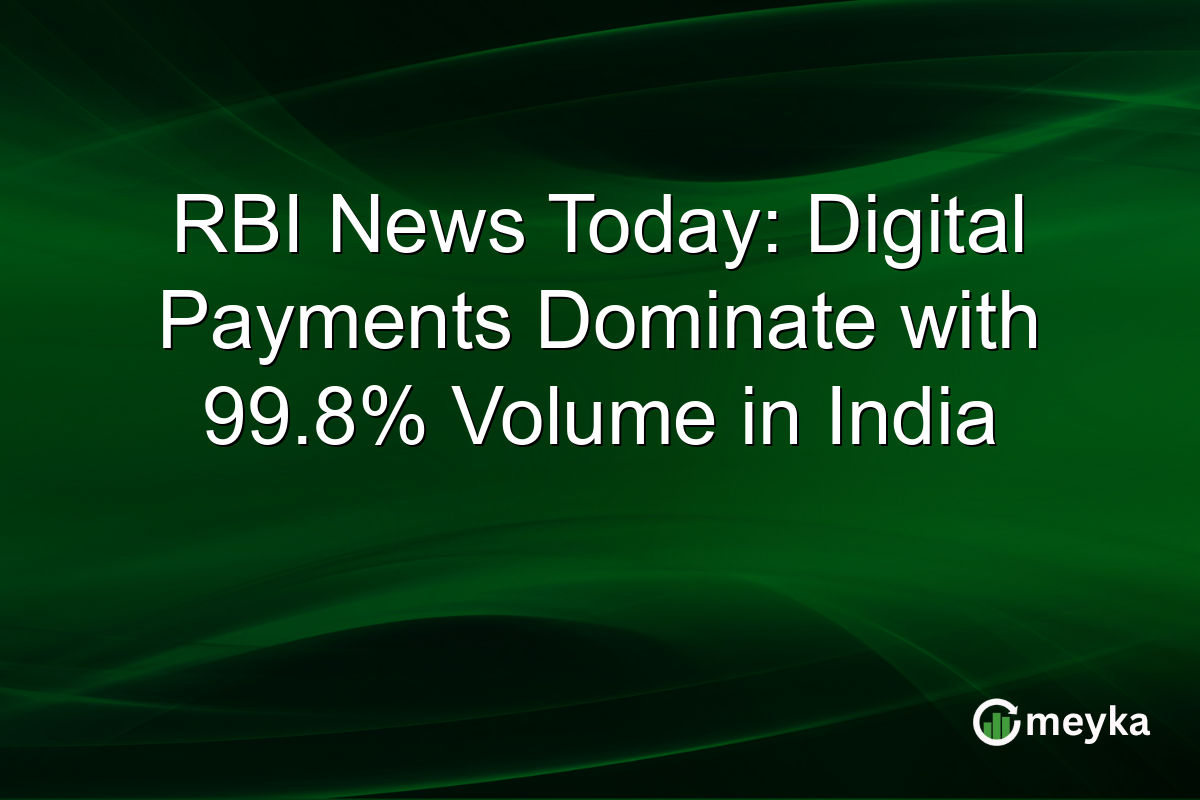RBI News Today: Digital Payments Dominate with 99.8% Volume in India
India has experienced an explosive rise in digital payments, with recent data showing they now account for 99.8% of the transaction volume. This significant shift, guided by the Reserve Bank of India (RBI), spotlights the country’s dynamic adoption of digital financial tools. The movement from cash to digital reflects changing consumer behaviors, boosting convenience and efficiency in everyday financial interactions.
The Surge of Digital Payments in India
Digital payments in India have seen extraordinary growth, reflecting in 99.8% of the transaction volume being digital. This trend aligns with the government’s vision to enhance the digital economy and reduce cash dependency. Notably, systems like UPI (Unified Payments Interface) have become household names, facilitating over 10 billion transactions monthly.
This growth is not just about convenience—it’s reshaping how people interact with money, from bills to shopping. The dominance of digital payments marks a significant cultural and economic shift across the country. More insights can be found on the Economic Times.
Looking at consumer habits, this transition highlights the demand for faster and secure transaction methods, encouraging businesses to widen their digital infrastructures.
For investors, this trend indicates robust growth potential in fintech and digital service sectors. Adapting to these changes could be key in capturing emerging market opportunities.
Role of the Reserve Bank of India
The Reserve Bank of India plays a pivotal role in steering this digital wave. RBI’s proactive policies and frameworks ensure that digital systems remain secure and reliable. From setting up guidelines for fintech companies to monitoring digital transactions, RBI implements measures aimed at safeguarding user interests.
One of RBI’s missions includes increasing financial inclusion by promoting digital literacy and infrastructure, impacting millions across rural and urban areas alike.
These efforts legitimize the digital transaction surge, making India a model for digital transformation in developing economies worldwide. Investors can expect continued support and further innovations in this sphere, fostering confidence in digital commerce.
Consumer Behavior and Economic Implications
The embrace of digital payments reveals deep shifts in consumer behavior. With smartphones becoming more widespread, easy access to digital platforms drives this transition.
Consumers prefer digital for its convenience and traceability, which helps them manage finances better. This adoption also impacts the formal economy, increasing tax compliance due to traceable transactions.
The increased digital footprint is a goldmine for data analytics, offering businesses insight into consumer patterns. For companies focusing on digital tools, tailoring products to meet evolving needs can enhance user experience and engagement.
India’s payment trends echo a larger economic vibrancy. As digital becomes a cornerstone of daily life, the economy can benefit from improved efficiencies and innovative opportunities. This transition supports broader global economic integration.
Final Thoughts
To sum up, India’s dramatic shift towards digital transactions represents more than just technological advancement—it symbolizes a deep transformation within the economy. With 99.8% of transactions being digital, the implications stretch across societal behaviors and economic structures.
The Reserve Bank of India’s strategic involvement ensures this change supports both security and innovation. Consumers and businesses alike benefit from efficient, transparent transactions, fostering a more connected financial ecosystem.
For investors and stakeholders looking at India, this digital surge offers promising avenues in fintech and beyond. Whether engaging with e-commerce, banking, or tech industries, understanding the nuances of digital payment trends will be crucial in carving out success in India’s rapidly evolving market landscape.
Meyka, with its AI-powered tools, delivers real-time financial insights and predictive analytics, making it easier to navigate this digital revolution.
FAQs
Digital payments now account for 99.8% of transaction volume in India, showing a massive shift from traditional methods to digital platforms. This trend reflects both technological and cultural changes in the country.
The Reserve Bank of India supports digital payments through policies ensuring security and reliability. RBI promotes financial inclusion and digital literacy, crucial for the widespread adoption of digital transactions.
Digital payments offer convenience, traceability, and ease of use. They help consumers manage their finances efficiently and contribute to increased economic transparency and tax compliance.
Understanding India payment trends helps investors identify growth opportunities in fintech and related sectors. The shift to digital transactions signals a robust market potential driven by technological adoption and consumer behavior.
Disclaimer:
This is for information only, not financial advice. Always do your research.






